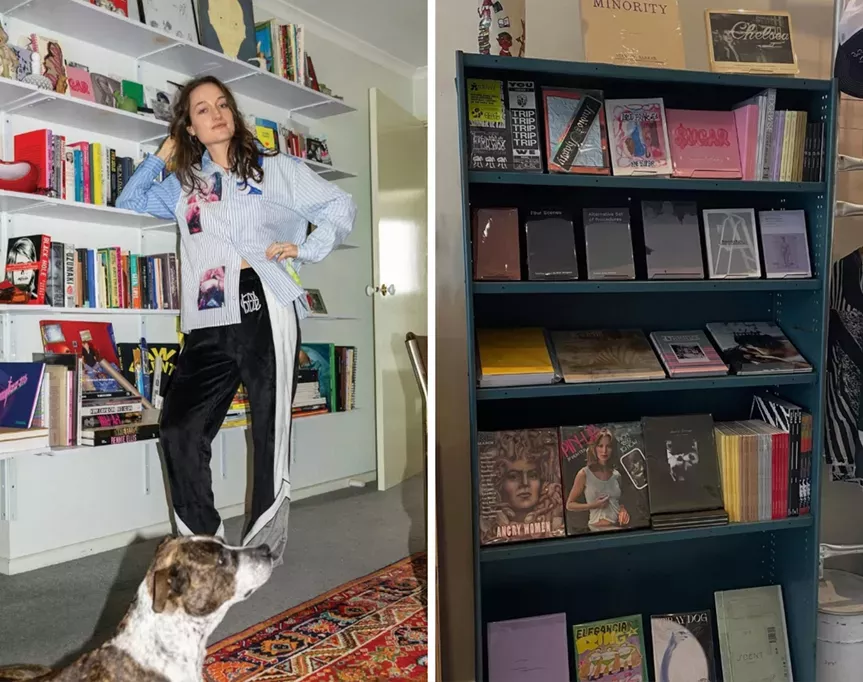tips for applying for grants, tackling social media and meeting client deadlines
A few things we learnt at the Makers in Business Online Symposium.
Earlier this month, more than 30 creatives gathered online to share their expertise at the Makers in Business Online Symposium. The event ran over two whole days, so we can’t possibly tell you about all of the awesome advice that was shared, but we can give you some handy nuggets of knowledge from a few rad sessions.
PREPARE FOR JOBS BY UTILISING THE TOOLS YOU’VE ALREADY GOT
During Rachel Burke’s panel, Maintaining Creativity, artist Pete Cromer confessed that his motivation to complete projects for clients dips once he hits the 95 per cent mark. “For some reason I struggle – I'm mentally onto something else,” he said.
To ensure that he can push through and meet client deadlines (which are usually on the shorter side), Pete makes sure that he understands exactly what the client is looking for and what needs to achieved in a certain amount of time. He also utilises his huge digital library of arty tools that he can draw on quickly. “A lot of my work is paper cut, which is not necessarily applicable in all instances because it is time consuming. So, I have a massive library of scanned textures and shapes that I can easily tap into. I will often work with them on a digital aspect so that I can meet the timelines easily.”
Rachel noted that one of the major challenges about big client projects is the back-and-forth that goes on before the project even begins. “After all the contracts are agreed on, you are left with two weeks of actual making time,” she said. “I think it’s about being really savvy with your back-end processes to set up that preparation, so that when opportunity strikes, you’re ready to just go for it.”
KNOW HOW YOU WORK BEST
Another way Pete stays on top of jobs is by working first thing in the morning and ahead of schedule, because he knows that’s when his creativity is really switched on. “I wake up at 5am naturally and I’m in bed by 8.30pm. That’s just how I work. So, I don’t work at night,” he said. “I always try to do things early, and before the due date, so that way I can wake up fresh the next day and review things. I like putting out good work so I always give myself time to review it. I think it’s about identifying your working habits and really playing on them.”
“The sentiment ‘know thyself’ is so important,” Rachel added. “At the end of the day, most of us creatives are working independently. There’s no HR, there’s no one monitoring your schedule. You have to make sure that you’re taking care of yourself and optimising yourself to know how you can work best.”
STAY ACTIVE ON SOCIAL MEDIA – EVEN WHEN TIMES ARE TOUGH
You, Me & Bones founder Waan Pivasiri is a pro when it comes to posting funny, relatable content on her business’s social media accounts. She told the rest of her panel (Social Media and Personal Boundaries, hosted by Renee Baker), that she has received heaps of positive customer feedback about her TikToks and Instagram Reels – even the ones that aren’t at all related to her products. Waan said that feedback and engagement has shown the effort she puts into her content is worth it, even when she’s strapped for time. “[Being active on socials while running a business] is a lot of work. And you’re doing everything yourself. You’re making. You’re designing. You’re bookkeeping. I have 15 minutes to do a Reel, and I like to do something that is still relatable to other people,” Waan said. “It’s just something quick and it’s for a laugh. But still, it’s working for my business… In a non-direct way, it is generating sales.”
Fellow panellist and Confetti Rebels owner Amy Clarke added that when she doesn’t post content on her social media accounts, sales “considerably drop”, so now, she makes sure to stay active online – even if it’s just to let people know she can’t be as active as usual. “Always show up. If you don’t show up, then you get lost in the abyss,” Amy said. “Even if you’re showing up just to say ‘I can’t show up as much as I should right now,’ that still translates to your followers.”
“It’s definitely exhausting. I was going to be like, ‘Ah, stuff the Reels and stuff the algorithm.’ But at the end of the day, you can’t. I ended up going and working out what kinds of Reels aesthetically fit with my brand and fit with my personality. If they’re trending, even better. And then I applied those sorts of Reels to my branding.”
HOW TO GET GRANTS
Renee Baker chatted with the Australia Council for the Arts’ Mikala Tai and the Australian Design Centre’s Lisa Cahill about all things grants, including the kinds of grants that are available to makers and how to apply for them. The trio had heaps of handy advice up their sleeves, including:
1. Use your own voice in your grant application and get your point across. The assessors (aka the people who decide which applicants are successful) are looking for passionate people who need funding to launch the next step in their business – whether they’re an emerging maker, a mid-journey business or an established business.
2. Prepare for the grant application process by thinking of all the costs associated with your project. Be realistic about those costs and seek quotes where possible. When you do apply for a grant, and you’re outlining how the funding would be used, don’t forget to include paying yourself in your budget. Assessors will notice if you haven’t included your own payment in the equation. As Mikala put: “Things aren’t viable if you’re not actually paying yourself.”
3. Sign up to your local council’s newsletter, your state government’s newsletter, and the Australia Council for the Arts’ newsletter. They will occasionally share information about upcoming grants that you might be able to apply for.
4. Think about whether your idea has been done before and if that idea has received funding in the past, as the unique aspects of your project will be the things that stand out during the application process. Lists of past grant winners can be found on government websites.
5. Don’t be afraid to ask people for help. Lean on your friends and mentors (they might be willing to proofread your grant application) and contact the organisations that are offering the grants to ask any questions you might have about the process.
6. Make sure your application follows all the guidelines and looks visually appealing. High-quality photos of your products (or whatever it is you have to offer) are important!
For more small-business stories like this, visit frankie.com.au/strictly-business, or sign up to our monthly e-newsletter. Have a small-business story you’d like to share? Pitch it to us.

.jpg&q=80&h=682&w=863&c=1&s=1)

.jpg&q=80&h=682&w=863&c=1&s=1)








.jpg&q=80&w=316&c=1&s=1)













.jpg&q=80&w=316&c=1&s=1)










